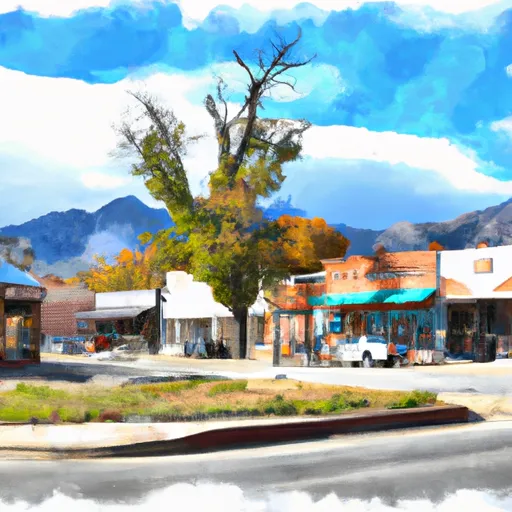-
 Snoflo Premium
Snoflo Premium
Get unlimited access to all our content
With no Ad interruptions! - Start Your Free Trial Login with existing account
Bishop
Eden Index
Climate
8.0
•
Recreation
5.9
•
Community
1.4
•
Safeguard
5.6/10

Bishop, Georgia is a small town located in Oconee County, known for its mild climate with hot and humid summers and cool winters. The town is situated in the Piedmont region, surrounded by various water bodies such as the Apalachee River, Barber Creek, and Grove Creek. These water bodies contribute to the hydrology of Bishop and are essential for various outdoor recreational activities such as fishing, kayaking, and swimming. Bishop offers a variety of outdoor recreational opportunities, including hiking and mountain biking trails at the nearby Oconee Forest Park, and the popular Sandy Creek Park, which offers camping, picnicking, and boating opportunities. Overall, Bishop, Georgia is a perfect destination for outdoor enthusiasts and nature lovers.
What is the Eden Index?
The Snoflo Eden Index serves as a comprehensive rating system for regions, evaluating their desirability through a holistic assessment of climate health, outdoor recreation opportunities, and natural disaster risk, acknowledging the profound impact of these factors on livability and well-being.
Climate Health Indicator (CHI): 8.0
Bishop receives approximately
1232mm of rain per year,
with humidity levels near 85%
and air temperatures averaging around
17°C.
Bishop has a plant hardyness factor of
8, meaning
plants and agriculture in this region tend to thrive here all year round.
By considering the ideal temperature range, reliable water supplies, clean air, and stable seasonal rain or snowpacks, the Climate Health Indicator (CHI) underscores the significance of a healthy climate as the foundation for quality living.
A healthy climate is paramount for ensuring a high quality of life and livability in a region, fostering both physical well-being and environmental harmony. This can be characterized by ideal temperatures, reliable access to water supplies, clean air, and consistent seasonal rain or snowpacks.
Weather Forecast
Streamflow Conditions
Altamaha
Area Rivers
Altamaha
Snowpack Depths
Altamaha
Reservoir Storage Capacity
Altamaha
Groundwater Levels
Recreational Opportunity Index (ROI): 5.9
The Recreational Opportunity Index (ROI) recognizes the value of outdoor recreational options, such as parks, hiking trails, camping sites, and fishing spots, while acknowledging that climate plays a pivotal role in ensuring the comfort and consistency of these experiences.
Access to outdoor recreational opportunities, encompassing activities such as parks, hiking, camping, and fishing, is crucial for overall well-being, and the climate plays a pivotal role in enabling and enhancing these experiences, ensuring that individuals can engage in nature-based activities comfortably and consistently.
Camping Areas
| Campground | Campsites | Reservations | Toilets | Showers | Elevation |
|---|---|---|---|---|---|
| Toccoa Falls College RV Park | 12 | 870 ft | |||
| Parks Ferry | 85 | 582 ft | |||
| Oconee River | 5 | 561 ft | |||
| Hard Labor Creek State Park | None | 713 ft | |||
| Lake Russell | 42 | 1,081 ft | |||
| Central City Park - State Fairgrounds | None | 295 ft | |||
| Warner Robins AFB Military | None | 348 ft | |||
| Lake Sinclair | 61 | 335 ft | |||
| Tallulah Gorge State Park | None | 1,551 ft | |||
| Lake Yonah County Park | None | 697 ft |
Nearby Ski Areas
Catastrophe Safeguard Index (CSI):
The Catastrophe Safeguard Index (CSI) recognizes that natural disaster risk, encompassing floods, fires, hurricanes, and tornadoes, can drastically affect safety and the overall appeal of an area.
The level of natural disaster risk in a region significantly affects safety and the overall livability, with climate change amplifying these risks by potentially increasing the frequency and intensity of events like floods, fires, hurricanes, and tornadoes, thereby posing substantial challenges to community resilience and well-being.
Community Resilience Indicator (CRI): 1.4
The Community Resilience Indicator (CRI) recognizes that education, healthcare, and socioeconomics are crucial to the well-being of a region. The CRI acknowledges the profound impact of these elements on residents' overall quality of life. By evaluating educational resources, healthcare accessibility, and economic inclusivity, the index captures the essential aspects that contribute to a thriving community, fostering resident satisfaction, equity, and social cohesion.

